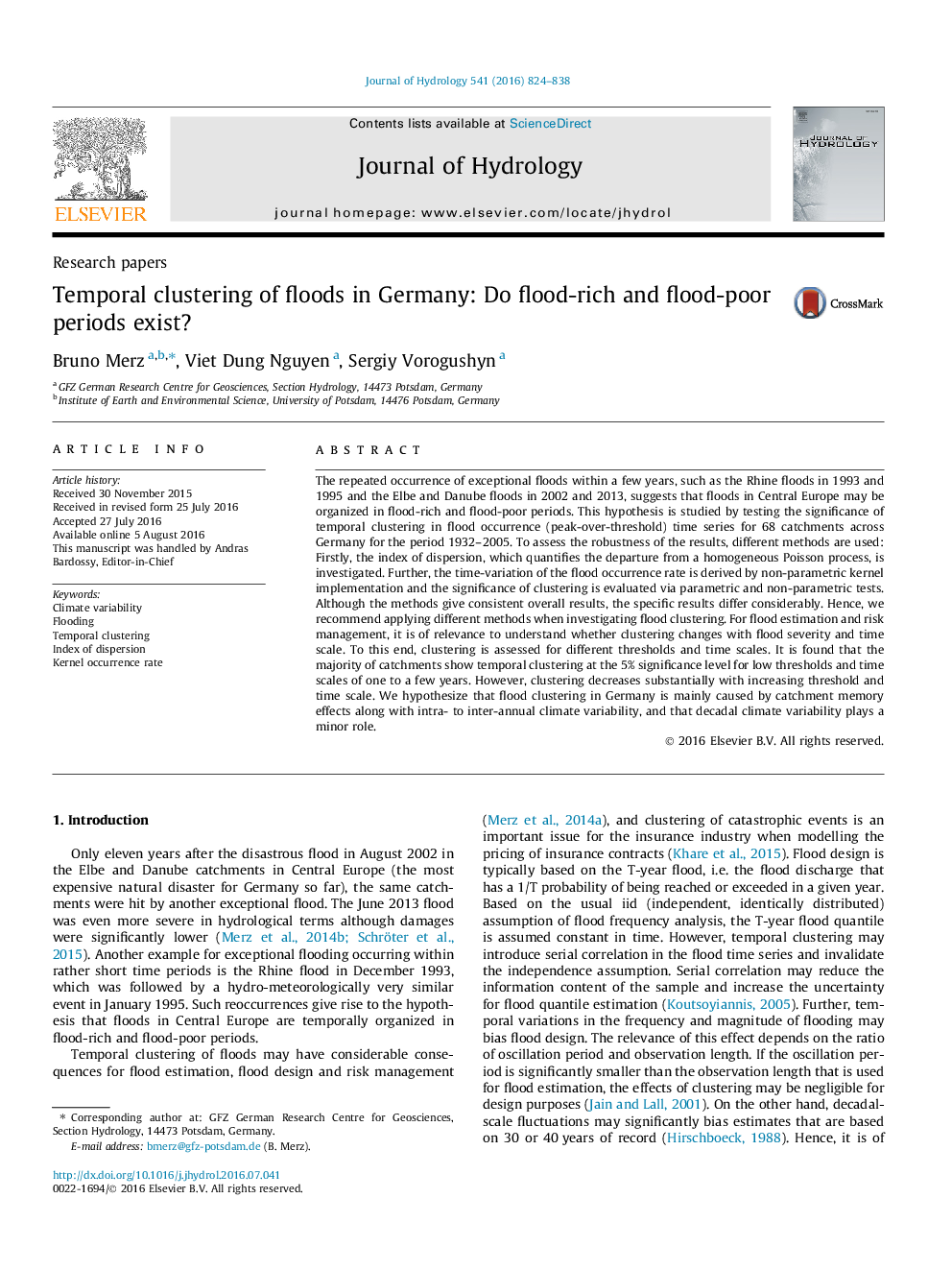| کد مقاله | کد نشریه | سال انتشار | مقاله انگلیسی | نسخه تمام متن |
|---|---|---|---|---|
| 6409417 | 1332870 | 2016 | 15 صفحه PDF | دانلود رایگان |
- Catchments show flood clustering for low thresholds and inter-annual time scales.
- Clustering decreases substantially with increasing threshold and time scale.
- It is recommended applying different methods when investigating flood clustering.
The repeated occurrence of exceptional floods within a few years, such as the Rhine floods in 1993 and 1995 and the Elbe and Danube floods in 2002 and 2013, suggests that floods in Central Europe may be organized in flood-rich and flood-poor periods. This hypothesis is studied by testing the significance of temporal clustering in flood occurrence (peak-over-threshold) time series for 68 catchments across Germany for the period 1932-2005. To assess the robustness of the results, different methods are used: Firstly, the index of dispersion, which quantifies the departure from a homogeneous Poisson process, is investigated. Further, the time-variation of the flood occurrence rate is derived by non-parametric kernel implementation and the significance of clustering is evaluated via parametric and non-parametric tests. Although the methods give consistent overall results, the specific results differ considerably. Hence, we recommend applying different methods when investigating flood clustering. For flood estimation and risk management, it is of relevance to understand whether clustering changes with flood severity and time scale. To this end, clustering is assessed for different thresholds and time scales. It is found that the majority of catchments show temporal clustering at the 5% significance level for low thresholds and time scales of one to a few years. However, clustering decreases substantially with increasing threshold and time scale. We hypothesize that flood clustering in Germany is mainly caused by catchment memory effects along with intra- to inter-annual climate variability, and that decadal climate variability plays a minor role.
Journal: Journal of Hydrology - Volume 541, Part B, October 2016, Pages 824-838
